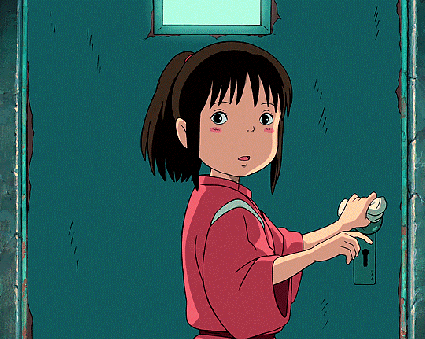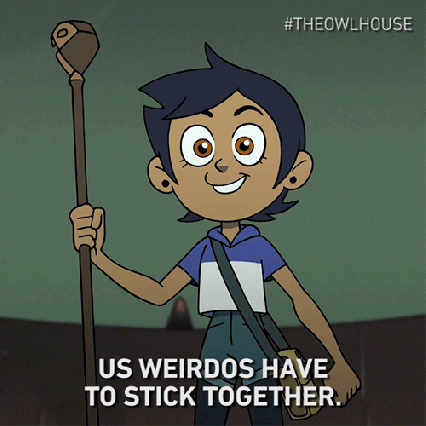My class this term is Cultural Studies, which I have really been enjoying so far; it had been quite a while since I had a humanities class, and the change of pace has been very welcome. I am hoping to actually blog about what has been going on in my life for the past few months, which have been pretty intense and emotionally Gordian (being in bereavement is like that, and I still don’t feel like I’ve fully processed it all); but, for now, I thought that I would share the initial discussion post I wrote for the first week of the course. It’s a fairly limited analysis, and is maybe a little bit clunky to read—I had specific questions I was supposed to answer, and I am not always the best at writing transitions between topics—but it ended up being the genesis of some very stimulating conversations with my peers and instructor. The discussion posts this week have arguably been the most involving that I’ve had, which has been a lot of fun. I have more school stuff that I need to get done; so, until next time, live well, take care of those around you while you still have them, and am Yisrael chai.
.

.
.
.
.
I was definitely looking forward to this class, and am really enjoying it so far! I very much appreciated how thorough the resources were for this assignment; in particular, I found the University of Minnesota’s Foundations of Culture and Identity especially helpful for learning a lot of the vocabulary to describe and think about different concepts for this assignment—such as the differences between avowed and ascribed identities; as well as the distinctions between personal, social, and cultural identities. Like, I am sure, all of my classmates, multiple cultural identities come to mind when I think of my sense of self; and both how I relate to others and how they relate to me. Some of these are undoubtedly dominant cultures in an American context—such as being White; with mostly Irish, English, and German ancestry—with others depending on where lines are drawn, such as being Catholic, which is the largest denomination in the United States by population, even though we are definitely outnumbered by Protestant Christians as a whole; and other identities that are obviously nondominant, such as being disabled and asexual. Each of these identities inform my worldview—both in ways I am aware of (a state that Foundations of Culture and Identity calls salience) and, I am sure, in ways I am more oblivious to; things I might assume are “normal” or universal until I am presented with alternative perspectives from other people’s lived experiences.
For example, I would deduce that Catholicism (which would be considered an avowed identity) provides me with both familial and communal rituals to experience the changing seasons—Advent, Lent, major feasts, and so on—as well as to approach major lifecycle events, such as celebrating birth and grieving the dead; in addition to a sacramental imagination that informs how I understand myself as encountering the divine through the material world, from the people I meet to the stories we share. One example of something I had the assumption was more or less a universal in modern American society at large was an appreciation for and understanding of germ theory; I definitely had a rather rude awakening when the pandemic started as to the degree to which people would forego guidelines to prevent the spread of disease—whether out of conspiratorial thinking and a distrust of institutions, apathy for others’ wellbeing, or just ignorance of how exactly contagious diseases spread—and I had to confront the concept that something I not only took for granted, but put a great deal of importance on in my own worldview, is something that is not present in the same way for many others in my own society. Learning about how others perceive and understand the world has been a lifelong passion of mine, and I am really looking forward to increasing my awareness and understanding of different worldviews throughout this course.
I believe that part of my interest in understanding and comparing others’ perception is derived in large part from being aware of how different my own is from neurotypicals in general. Something that was emphasized in the live class this week is the contrast between culture and biology—and how the former is learned, while the latter is inherited. With that in mind, I thought that it would be interesting for the focus of this post to be on a cultural identity where the two intersect, where differences in our worldviews arise due to how we are built, and I thought that disabilities and their associated cultures are very apt examples of this. While I have multiple diagnoses, the one that has undoubtedly most influenced my way of seeing the world, and how it sees me, is autism. Autism is a developmental disorder; our current scientific understanding of the condition is that it is congenital, so it is something that is present from birth—even if it later manifests in more obvious ways as children reach developmental milestones differently as they grow—and it affects ways we communicate and interact with others, reason and understand different concepts, and experience sensory information and emotions. This is actually another example of an identity that, while nondominant, affects me in ways I do not always have salience of; I have only ever been me, I have never experienced what it is like being a neurotypical person, so I am surprised with some frequency that things I have grown up with and taken for granted are not universal or considered “normal”. In addition to sensory and functional difficulties that are more inherent in our condition, autistics face social challenges just by existing in a neurotypical-majority world; this can result in isolation or bullying, as well as a lack of access to resources (including educational ones, with not many of us graduating college) and opportunities (the vast majority of us are unfortunately either unemployed or underemployed).
Similar to the deaf community, autistics from various backgrounds have created a unique subculture; with similarities both to disabled communities at large (especially in regards to accessibility, and autism being frequently comorbid with autoimmune issues) and the wider neurodiverse community specifically. Some characteristics of this culture include an emphasis on acceptance, self-determination, interdependence, and accessibility—including sharing coping mechanisms and resources we find helpful; in addition to criticism of interventions a substantial number of us consider unethical, such as applied behaviour analysis (which actually has scholarly connections with conversion “therapy”, if anyone is interested in going down an upsetting rabbit hole)—as well as language we have either developed or borrowed to describe different parts of the autistic experience; such as “stimming” (short for self-stimulating behaviours, like flapping one’s hands or humming), “samefoods” (meaning food that we may frequently rely on, either for its relative “safety” sensory-wise or for being comfortingly familiar; which can be of prominence due to sensory and digestive issues that effectively limits our diets, and is technically a culinary aspect of the subculture), “special interests” (subjects we are obsessed with and frequently find joy gathering information about or participating in), and “info-dumping” (the act of sharing a large quantity of facts at once, very often about one of our special interests, and can be seen as a characteristic of autistic communication). There is also a lot of cultural significance placed on Augmentative and Alternative Communication (AAC), with methods ranging from sign language, to pictorial boards, to texting, and even GIFs. As someone who had a major speech delay (I technically learned to sign years before I could speak with my voice) and who still sometimes goes nonverbal, this is an area of the culture of particular interest to me.
It should come as no surprise that being autistic also affects my tastes for different media. I am very often attracted to stories with a focus on protagonists who have to navigate social differences; and who grow to accept their unique quirks, challenges, and joys as a part of themselves. I also have a general preference for stories where the subtexts of different situations are more explicitly conveyed, just because I am more likely to follow along with what is happening and what the different motivations of characters are. I believe that storytelling has a powerfully unique capacity to foster empathy for those who are different, which is a major part of why I applied for film school to begin with, and I hope that I can help make the world a better place by helping to craft narratives that speak to people in this way.
When I think of ways that autistic culture has influenced me on a personal level, I would say that it has helped me become more confident in myself, excited me by finding and learning about others with similar experiences to mine, and helped educate me on unique challenges autistics with different life circumstances than mine are faced with (especially women and girls, who are much more likely to go undiagnosed; and autistics from different racial backgrounds than mine, who are more likely to be targets of police brutality). We all have different lived experiences, and have strengths and weaknesses in different areas; but just knowing that you are not alone—that you are not broken, but different, and that there are others like you who relate to your experiences in a very concrete way—can go a long way in fostering a healthy sense of self-worth and perseverance through whatever difficulties you might face.
.
 .
.
.
.
.
-Isaac““
.
.
.
.
.
Leave a comment